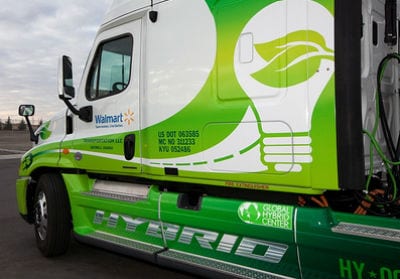As automotive manufacturers ready themselves for the introduction of higher fuel-economy standards, analysis from Kelly Blue Book is casting a skeptical eye toward the otherwise widely hailed fuel-efficiency proposal.
 The proposal, called the corporate average fuel economy (CAFE) standard, will require vehicles to reach 54.5 miles per gallon by the year 2025. A more gradual fuel-efficiency plan in the meantime calls for manufacturers to increase rates by 4.1 percent annually for cars and 2.9 percent per year for light trucks. (Automotive Fleet editor Mike Antich explained what the CAFE proposal could mean for fleet services in a Q-and-A blog entry we posted a couple of months ago.)
The proposal, called the corporate average fuel economy (CAFE) standard, will require vehicles to reach 54.5 miles per gallon by the year 2025. A more gradual fuel-efficiency plan in the meantime calls for manufacturers to increase rates by 4.1 percent annually for cars and 2.9 percent per year for light trucks. (Automotive Fleet editor Mike Antich explained what the CAFE proposal could mean for fleet services in a Q-and-A blog entry we posted a couple of months ago.)
The general line of thinking about the proposal is that despite higher up-front acquisition costs, more fuel-efficient vehicles should ultimately save money over the long haul.
But Kelly Blue Book, the car-valuation company, has come out saying that the public is “being sold” on the idea. The vehicle-valuation company says that as vehicle fuel efficiency increases, the rate of cost savings begin to decrease. By their math, assuming the price of gas is $5 per gallon, the annual savings on a vehicle that gets 50 mpg vs. 40 mpg is only about $375 a year (assuming 15,000 miles driven). If the price of gas is $3 a gallon, the annual cost savings on a 50 mpg vehicle vs. a 40 mpg vehicle are only about $225 per year — well below the added cost of manufacturing (or purchasing) the more efficient vehicles.
The equation relies on gas prices staying more or less flat for the next several years — something KBB anticipates.
If cars get more fuel-efficient, but the cost of gasoline and the number of total number of miles driven per year remains the same, there comes a point at which the difference in the number of times cars have to fill up their tanks starts evening out. It would generally take over five years for a 50 mpg car to save more money on gas than it cost to make and buy it over the 40 mpg version.
The money-saving aspects of the CAFÉ regulations may indeed be overstated, although of course it isn’t exactly the only goal of the proposal, which has as much to do with environmental impact and reliance on foreign crude as consumer gas-money-economic-efficiency.
Anyway, it’s yet another thing for fleet managers to consider as they think about readying their fleets to meet the new standards.

Share this: